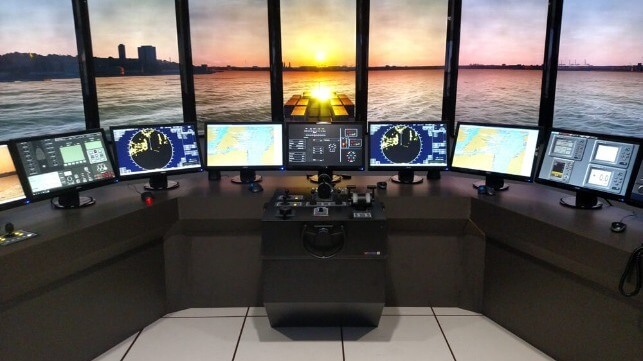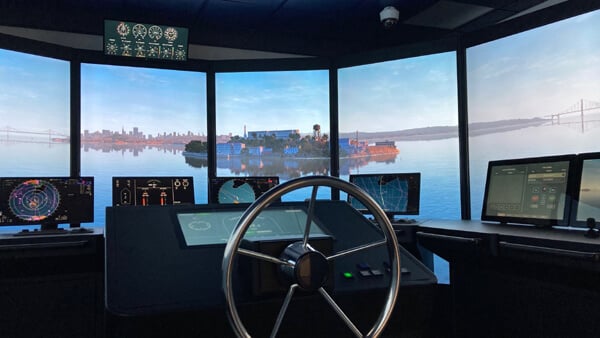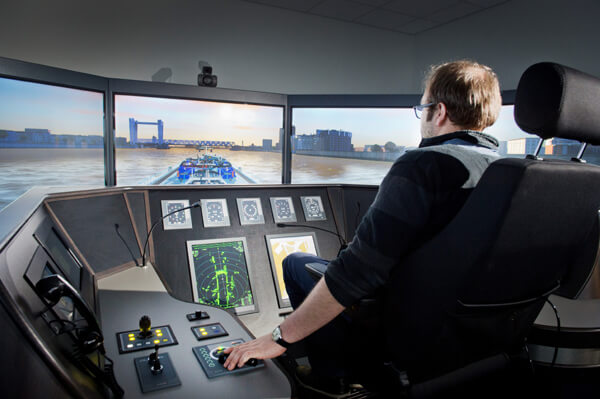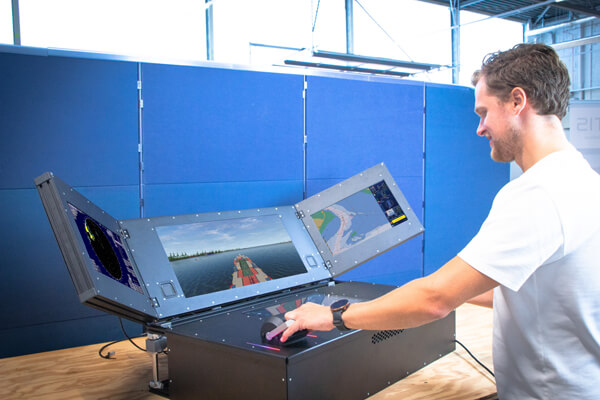Improving the Experience and Accessibility for Simulation Training

A growing understanding of the value of simulation-based training together with new legislative initiatives and education standards is helping the maritime industry to improve the safety and sustainability of operations. New technologies are playing a key role in making simulation-based training more accessible, as well as enhancing the educational experience and developing the skills of current and future seafarers.
“We are all about enabling learning by simulation,” says Fabian van den Berg, Chief Executive Officer of VSTEP, as the company marks its twentieth anniversary in 2022 as a leading developer of a broad range of simulation-based training systems. “Historically, we have done it by educating students or as professional development for active mariners at centers set up by shipping companies. Now we are expanding the accessibility of training with mobile and at home products for our NAUTIS Maritime Simulators.”
According to van den Berg, leading shipping companies such as Chevron, which partners with VSTEP, understand the value of professional development and investing in their officers’ skills. Chevron recently launched a new simulation center that includes multiple NAUTIS Class A simulators with separate bridge wings, instructor stations, a classroom with six premium desktops, and a debriefing station. In total, the new training center has 48 consoles and 36 displays walls for 85-inch displays to provide the most realistic simulation experience. Chevron uses the center both to invest in the development of its officers as well as to validate the skills of captains.
“Chevron is at the cutting edge,” says van den Berg. He notes that the shipping operation is keen to incorporate new technologies and has continued to invest in training through all the cycles in the oil market.

Advancements in technology are playing a key role in the quality of the experience offered during the training sessions. VSTEP has a team of software developers, project managers, designers, testers, engineers, and master mariners to create tailored, specific training systems. According to van den Berg today the systems can provide greater flexibility to integrate different types of controls and systems such as radar while integrating hydrodynamic models to provide a highly realistic environment without the risk, cost, and time associated with traditional training.
“We want to make the ship behave like a ship needs to do,” says van den Berg. “Technology is helping us to provide the most realistic experience from the NAUTIS platform, which is helping to lead a paradigm shift in the training landscape. The maritime industry can still gain a lot in the use of simulation-based training.”
Simulation training is not as widely used in the maritime sector as in other industries. Aviation, for example, has widely adopted simulators with commercial pilots being required to receive 30 hours of simulation training per year as well as before they are certified to operate new models of aircraft. In the maritime industry, it is currently not even one hour of simulation training per year, but VSTEP’s vision is to ensure that at least one-third of the maritime industry has obtained its skills through simulation technology.
Simulation training can fill a vital role to assist with the implementation of advancements in ship design and systems. The human factor contributes to 86 percent of causalities in the maritime industry. Simulation training can help officers understand how their vessels will behave before entering ports, maneuvering, or in other situations.
“When seafarers go from conventional controls to azimuth, for example, simulation training can help them to learn the new controls before they ever go aboard their ship,” says van den Berg. “We have seen examples in the training where they are all over the place the first time they touch the new controls, but quickly with the simulations they learn the skills needed to control their ships. They can also test operating scenarios to address issues of sustainability, reducing fuel consumption in their operations.”
Damen Shipyards Group, for example, is working with VSTEP to develop training programs available to customers as a module with orders for their new ships. Customers can select customized simulation training before getting their ships to experience the operational characteristics and how best to operate the new vessels.

There has also been a strong effort in the educational sector to enhance the capabilities of their simulators in part in response to new standards from the organization that set standards for training. ROC Friese Poort, one of the leading training institutes in the Netherlands that offers vocational training to around 15,000 students each year, recently developed a new training center with VSTEP. It includes a new professional sea-going full mission bridge simulator, along with an upgrade of three console simulators with the latest software and a replacement of older hardware.
ROC Friese Poort also introduced a new training program focused on inland shipping. The inland sector is leading the industry with new regulatory requirements for training and is one of the areas where simulation-based training is greatly enhancing operations. For the first time, a set of rules was introduced for simulation training for inland shipping. To be compliant with CESNI standards, ROC Friese Poort added a new larger vessel handling simulator along with upgrading its Inland Bride Simulator and new handling simulations with advanced software.
“The shipping industry is facing a serious challenge,” explains van den Berg. “Currently there is a 25 percent shortage of officers with experts forecasting it will only get more challenging in the years ahead. Making training more accessible can help to prepare new seafarers.”
In November 2021, VSTEP introduced a new mobile system, Portable Simulator, that permits it to bring the training to customers either in their offices or even aboard ships. The system is fully contained and can be set up in just five minutes to provide training up to a Class C level. The simulator is equipped with radar, ECDIS, outside views, conning panel, and azimuth controls along with haptic feedback that makes it possible for the instructor to be in a different location and give input to the individual at the controls.

The next advancement coming in 2022 is NAUTIS Home. With nothing more than a serious gaming computer, the learning can begin at home and aboard ships or even true enthusiasts can experience a professional simulation. VSTEP in 2006 introduced a Ship Simulator targeted for maritime enthusiasts which became the basis for the professional NAUTIS maritime simulator and now with advancements in technology and graphics the new home product will provide a realistic experience as the first step in training mariners.
“Technology is helping us to make the maritime industry more accessible,” says van den Berg. Simulation-based training is playing an increasing role in improving the safety and sustainability of the maritime industry helping to prepare for future advancements.”
For additional information and to stay up-to-date with industry trends and VSTEP developments, sign up for the newsletter.
The opinions expressed herein are the author's and not necessarily those of The Maritime Executive.
